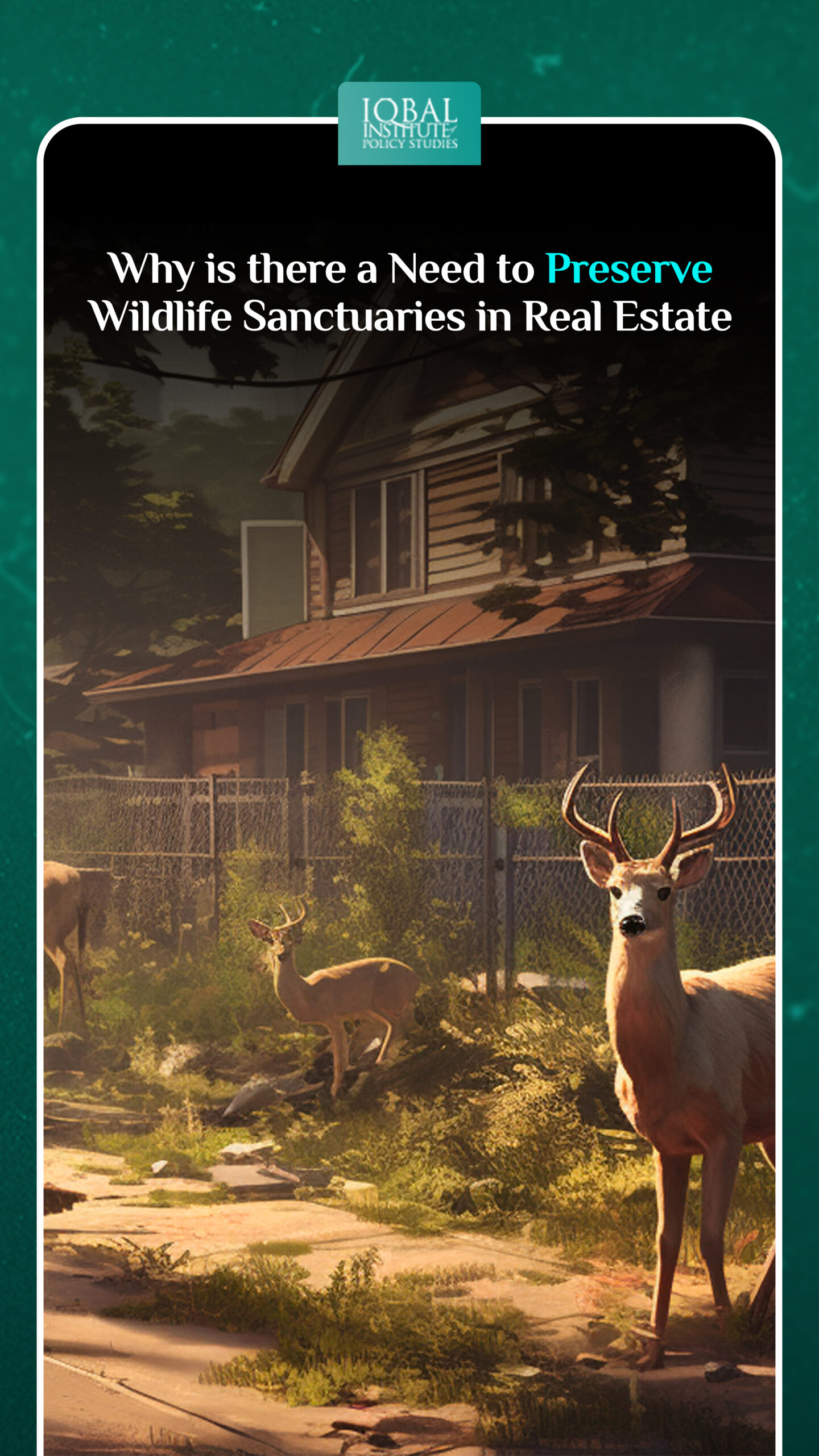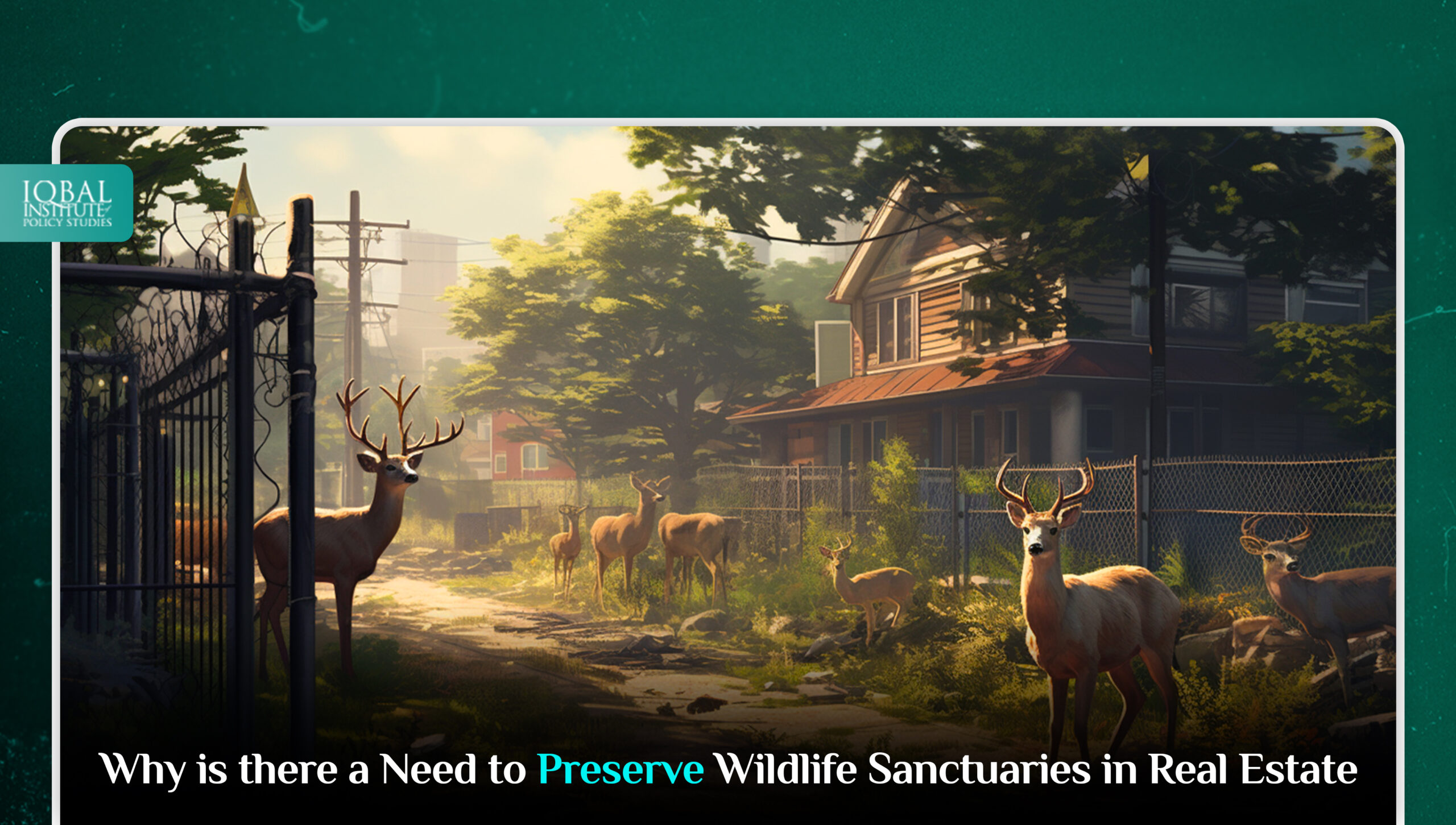The drive for progress in the fast-paced world of real estate frequently comes at the expense of nature’s pristine beauty. As cities grow and concrete landscapes overwhelm the natural world, the value of conserving green spaces becomes evident. Wildlife sanctuaries, which are defined areas protected for native flora and animals, have emerged as an effective alternative for balancing urbanisation requirements with biodiversity preservation. These sanctuaries not only provide shelter for endangered animals and important habitats, but also have enormous real estate value such as serving as locations for recreation, ecological maintenance, environmental beautification, disaster mitigation, and refuge, as well as improving aesthetics and physical and mental health, controlling microclimate to reduce energy use, and carbon sequestration. Thus, it has become one of the most essential factors for consumers to consider when purchasing a home. This growing tendency in real estate to incorporate wildlife sanctuaries into construction plans thus requires the recognition of the necessity of maintaining ecological balance and protecting the world’s natural heritage.
The Need to Preserve Wildlife Sanctuaries in Real Estate
The inexorable march of urbanisation has led to the loss of natural habitats, pushing wildlife species to the brink of extinction. Recognising the importance of maintaining ecological balance and preserving the world’s natural heritage, there has been a growing trend in real estate to integrate wildlife sanctuaries into development plans. These green spaces offer countless benefits, not only for wildlife but also for human residents and the broader environment.
Wildlife Sanctuaries Enhance Property Value
The most tangible benefit of integrating wildlife sanctuaries in real estate projects is the positive impact on property value. Properties located near or adjacent to protected green spaces often command higher prices and greater demand. The scenic beauty and tranquility provided by wildlife sanctuaries appeal to homebuyers seeking a connection with nature while still enjoying the comforts of urban living. Furthermore, the presence of these sanctuaries within a real estate development becomes a unique selling proposition, differentiating the project from others in the market. It attracts potential buyers who value sustainable living and environmental conservation, contributing to a stronger market appeal.
Promoting Sustainable Development
The incorporation of wildlife sanctuaries aligns with the principles of sustainable development. By preserving green spaces and wildlife habitats, real estate developers demonstrate their commitment to minimising the environmental impact of their projects. Sustainable development practices not only benefit the immediate community but also contribute to a greener and healthier planet for future generations.
Improving Quality of Life
Wildlife sanctuaries within real estate projects have a profound impact on the quality of life for residents. These green spaces offer a respite from the hustle and bustle of urban life, providing a peaceful retreat to unwind and connect with nature. Access to natural surroundings and greenery has been linked to improved mental well-being, reduced stress levels, and increased physical activity.
Creating Spaces for Community Interaction
Wildlife sanctuaries often serve as gathering spaces for communities, fostering a sense of belonging and connection among residents. Such green areas provide opportunities for social interactions, recreational activities, and community events, creating a cohesive neighborhood bond.
Promoting Biodiversity Conservation
Preserving green spaces supports biodiversity conservation by providing safe havens for native flora and fauna. These sanctuaries act as crucial habitats for endangered species, migratory birds, and other wildlife, facilitating their survival and reproduction. By promoting biodiversity, real estate developers contribute to the overall health and resilience of local ecosystems.
Contributing to Ecosystem Services
Wildlife sanctuaries within real estate projects contribute to essential ecosystem services. They improve air and water quality, enhance soil health, and support pollinators, benefiting not only the immediate environment but also the broader region.
Enhancing Climate Resilience
Green spaces and wildlife sanctuaries play a role in climate resilience. They help mitigate the effects of urban heat islands, reduce stormwater runoff, and absorb carbon dioxide, contributing to climate change adaptation and mitigation efforts.
Education and Environmental Awareness
Wildlife sanctuaries provide opportunities for environmental education and awareness. Developers can incorporate educational signage and programs, informing residents and visitors about the importance of wildlife conservation and the role of green spaces in maintaining ecological balance.
Collaboration with Conservation Organisations
Real estate developers can collaborate with conservation organisations to enhance the impact of wildlife sanctuaries. Partnerships with such organisations provide expertise in ecological restoration, habitat management, and monitoring of wildlife populations, ensuring the sanctuaries thrive and continue to contribute to biodiversity conservation.
Legal and Regulatory Incentives
In some regions, governments and local authorities offer legal and regulatory incentives to developers who allocate land for wildlife sanctuaries within their projects. These incentives may include tax benefits, density bonuses, or streamlined permitting processes, encouraging developers to incorporate green spaces in their developments.
Conclusion
Preserving green spaces and integrating wildlife sanctuaries into real estate projects have proven to be a win-win solution for both developers and the environment. These sanctuaries enhance property value, promote sustainable development, improve the quality of life for residents, and contribute to biodiversity conservation. By embracing the idea of coexistence with nature and recognizing the value of wildlife sanctuaries, real estate developers can play a pivotal role in safeguarding the natural world while reaping the rewards of enhanced market appeal and community satisfaction. As the world moves towards a future of urban growth and development, the preservation of green spaces and wildlife sanctuaries will continue to be a beacon of hope for a sustainable and harmonious coexistence between humans and the natural world.
This article is written by Haneen Gul. Haneen is a research analyst at the Iqbal Institute of Policy Studies (IIPS).



Leave a Reply